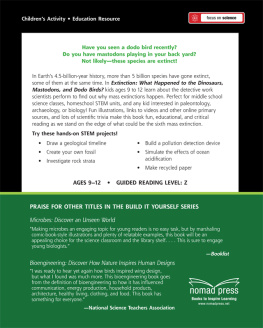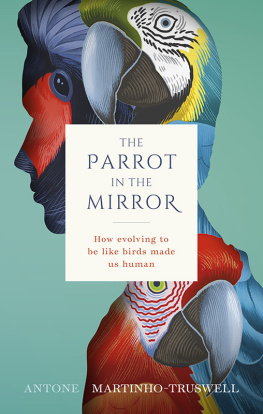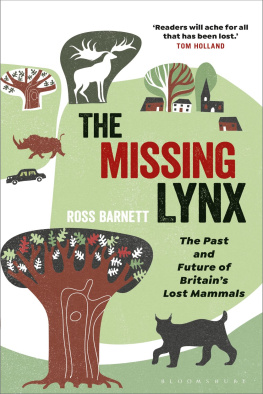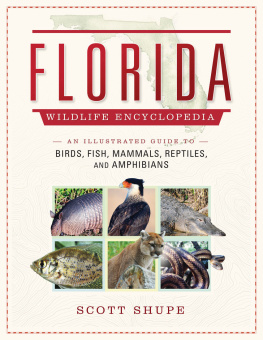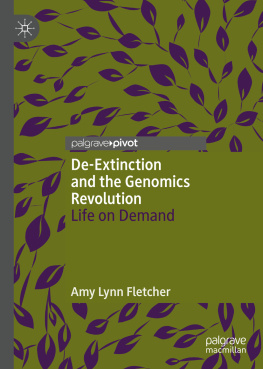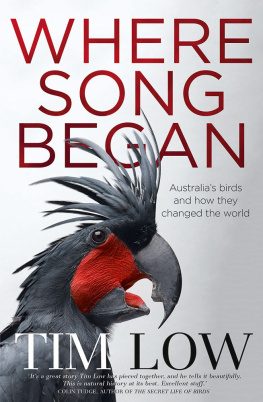

Gerardo Ceballos, Anne H. Ehrlich, and Paul R. Ehrlich
WITH ORIGINAL ART BY DING LI YONG
THE ANNIHILATION OF NATURE
Human Extinction of Birds and Mammals

2015 Johns Hopkins University Press
All rights reserved. Published 2015
Printed in China on acid-free paper
9 8 7 6 5 4 3 2 1
Johns Hopkins University Press
2715 North Charles Street
Baltimore, Maryland 21218-4363
www.press.jhu.edu
Library of Congress Cataloging-in-Publication Data
Ceballos, Gerardo.
The annihilation of nature : human extinction of birds and mammals / Gerardo Ceballos, Anne H. Ehrlich, and Paul R. Ehrlich; with original art by Ding Li Yong.
pages cm
Includes bibliographical references and index.
ISBN 978-1-4214-1718-9 (hardcover : alk. paper) ISBN 978-1-4214-1719-6 (electronic) ISBN 1-4214-1718-9 (hardcover : alk. paper) ISBN 1-4214-1719-7 (electronic) 1. NatureEffect of human beings on. 2. Extinction (Biology). 3. Rare birds. 4. Rare mammals. 5. Biodiversity conservation. I. Ehrlich, Anne H. II. Ehrlich, Paul R. III. Title.
GF75.C43 2015
591.38dc23 2014041105
A catalog record for this book is available from the British Library.
Special discounts are available for bulk purchases of this book. For more information, please contact Special Sales at 410-516-6936 or specialsales@press.jhu.edu.
Johns Hopkins University Press uses environmentally friendly book materials, including recycled text paper that is composed of at least 30 percent post-consumer waste, whenever possible.
In memory of our friend Navjot Sodhi, a brilliant conservation biologist who started on this journey with us but could not finish.
It was the best of times, it was the worst of times,
it was the age of wisdom, it was the age of foolishness,
it was the epoch of belief, it was the epoch of incredulity,
it was the season of Light, it was the season of Darkness,
it was the spring of hope, it was the winter of despair,
we had everything before us, we had nothing before us.
Charles Dickens, A Tale of Two Cities
Contents
Preface
HUMANITY HAS UNLEASHED a massive and escalating assault on all living things on this planet. The purpose of this book is to shine a spotlight on the onslaught, focusing on losses of the animals that are most familiar to people: birds and mammals. The roots of this destruction run deep through time. Human hunting and other activities were responsible for pushing populations of animals to extinction long before the agricultural revolution, which began about ten thousand years ago. Today, however, our collective assault on animals, plants, and microbes has reached such a horrendous level that any alarm call we might sound will be too faint to match the tragedy that is unfolding. The alarm must be amplified. Listen to our stories. Learn whats happening, and demand change.
In the past century or so, both the population size and technological capabilities of Homo sapiens have increased spectacularly, and this is the root cause of the rapid acceleration in human-caused species extinctions, precipitating what is now called the sixth great extinction wave. That label is based on powerful evidence that human actions may devastate the living world to a similar or even greater extent than did any of the five great extinction waves that demolished biodiversity, ending geological periods in distant prehistory. Those previous five extinction waves, which we describe in , were unconnected to any supposed intelligent species; they were due to natural events that eliminated as much as 90 percent of Earths flora and fauna in each occurrence. Each time, life recovered over many millions of years, producing a new array of life-forms. The last great extinction event occurred about 65 million years ago, long before the first upright, small-brained human ancestors moved onto the savannas of Africa.
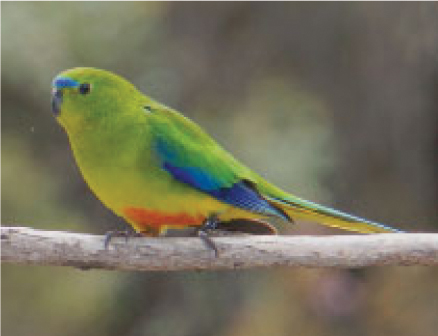
Only about fifty Tasmanian orangebellied parrots still exist in the wild.
The decimation of life-forms that is under way today is unlike the others because it is human induced and will have extremely serious consequences for humanity. The sixth extinction wave is the first to occur since the evolution of Homo sapiens. Because of humanitys success in populating and dominating the world, this new extinction spasm is proceeding rapidly and unfolding virtually everywhere. This new wave may also be a harbinger of the end of our global civilization, because the endangered populations and species of microbes, plants, and nonhuman animals are not just our only known living companions in the universe, but are working parts of life-support systems on which civilization depends.
The current extinction crisis and the risks it poses to humanity have been clear to scientists for a long time, but they are still almost always ignored, or even ridiculed, by others, including those who govern us. Vital statistics such as estimates of the number of species that have gone extinct or of the number of populations that have disappeared can be intellectually impressive. They dont, however, seem to carry the emotional impact to the public that the loss of biodiversity has for those of us who are deeply familiar with the impoverishment of nature. It is rather like the way, for most of us, that the many thousands of violent human deaths of strangers we hear about each year are regrettable, but they do not convey the emotional impact of the demise of a close friend or loved one.
To gain support for conservation initiatives and for maintaining the essential natural services on which humanity depends, it seems essential to communicate to the public and politicians the emotional side of the plight of biodiversity and to connect that predicament to human well-being. That, beyond giving the bare statistics, is what we attempt to do with this book on the endangerment and extinction of birds and mammals, the groups of animals with which most of us empathize.
We hope we can help you relate to the fate of the last wild Spixs macaw, a male that searched fruitlessly for a mate until it disappeared from the savanna of northeastern Brazil in 2000. We pray that we can make you care about that weird, wonderful, and poisonous mammal, the duck-billed platypus. We believe we can help you understand what a tragedy it would be if we lost the dwindling and little-known Cross River gorillas.
This book describes the horrors that have befallen too many of the worlds birds and mammals and threatens too many more in a rapidly deteriorating situation. We want to familiarize you with the stories of our feathered and furry relativesspecies that people have either expunged from Earth or are in the process of exterminating. We want to give you a feel for what interesting creatures they were and are, and recruit you to help stop an ongoing biotic genocide.
You neednt be a professional biologist to contribute. Indeed, in the 1930s the great American naturalist Aldo Leopold promoted the importance of wildlife research as a hobby for laypeople. More recently, a wonderful woman, Marj Andrews, in Queensland, Australia, has impressed biologists looking into the status of the Eungella honeyeater, a bird species described only thirty years ago, which has a tiny range. Marj, now in her eighties, had been making meticulous field notes on this and other species as the area around her was being logged, converted into farmland, and covered with strip mines. She produced an invaluable record of the biology of one interesting species and the fate of local birds under human pressure. Many amateurs like Marj are contributing to scientific knowledge about the fate of Earths biodiversity, and we hope to recruit more into doing it.
Next page

